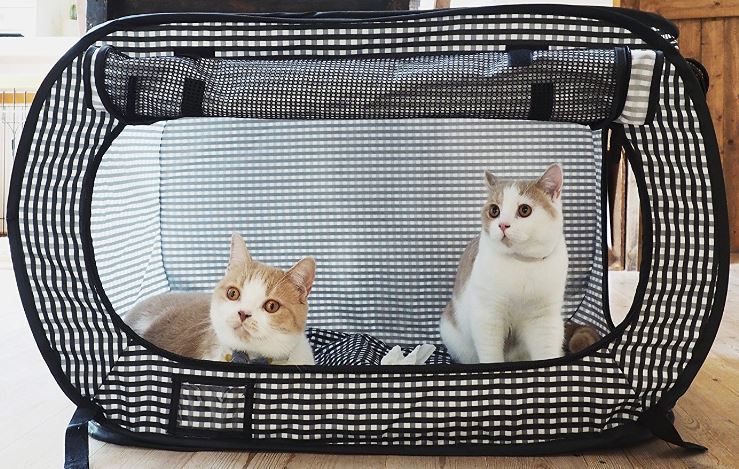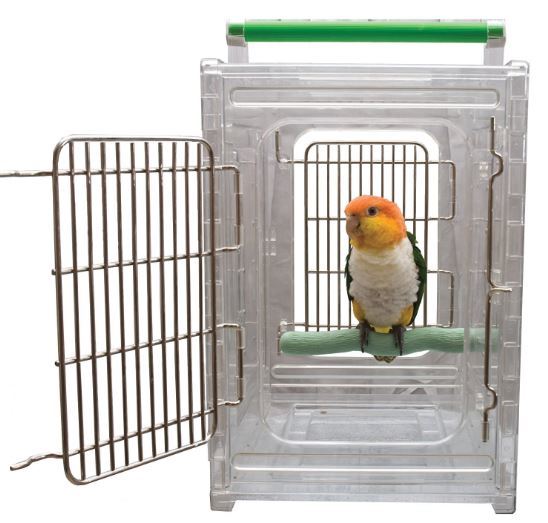Pet Emergency Preparedness
When Disaster Strikes
It can’t be stressed enough: When disaster strikes is not the time to try to prepare.
Do yourself and those you love a favor. PREPARE NOWso you’ll be ready when an emergency situation happens. The time you save is critical. And very well may save lives.
In a study by the Hazards and Vulnerability Research Institute at the University of South Carolina, it’s estimated that 91 percent of people living in the United States are in places that have a “moderate-to-high risk” of hurricanes, tornadoes, earthquakes, wildfires, volcanoes, high-wind damage, flooding, or terrorism.
Almost half the population — more than 130 million Americans — reside in the path of future hurricanes. Earthquakes aren’t limited to West Coast, either. Potential earthquake areas cover 39 states, affecting more than 75 million people.
One of the lessons that rescuers learned with the tragedy of hurricane Katrina was that many people would rather take their chances facing a disaster than leave their pets. Unfortunately, this decision cost many lives.
Why wait until it’s too late? Plan to protect your loved ones now.
Because of various laws, Red Cross shelters are not allowed to take in animals during an evacuation, so advanced planning is a must. Start by contacting your vet or local animal shelter to find out what facilities in your area provide shelter for pets. Boarding kennels, hotels, and especially friends and relatives outside of your area would be good places to start.
In any case, plan for the worst. Plan now for efficiency so when local or state officials announce plans to evacuate your area, you don’t waste precious time trying to prepare. Don’t assume that you’ll be able to return to your home in a matter of hours or days. Plan for weeks.You never know. Listen to and follow the instructions of local officials.
In the case of an emergency, you may not have a great deal of advanced warning. For pet emergency preparedness, here are some things you can do:
- Have an emergency kit for you and your pet stored in a location that is easy to access, such as by an exit door or garage. Your pet disaster preparedness kit should include the following items:
- Food and water for at least three days in airtight, waterproof containers
- Medical records and emergency contact numbers in a clean plastic bag or waterproof container
- Your pet’s medications
- Pet first-aid kit that include cotton bandage rolls, bandage tape and scissors, antibiotic ointment, flea and tick prevention, latex gloves, isopropyl alcohol and saline solution. You should be familiar with all of the items in the kit and know how to use them. (A pet first-aid book might also be beneficial).
- A pet carrier or crate should also be readily available in an emergency. Be sure to have readily available a litter box, litter, newspaper, paper towels, plastic bags and household bleach.
- In case you become separated from your pet, a photo of your pet will help other identify the pet they are looking for.
- Favorite toys, treats, familiar bedding and other items will help your pet handle the disruption of the normal routine.
- Pet ID tags that list pertinent information, such as your name and telephone number, are crucial so rescuers can more quickly reunite you with your pet if you become separated. Your cell phone number and/or the number of where you’re planning to go is a good idea to be able to track you down quicker should you and your pet become separated. Also, list contact information on your pet’s carrier.
- More and more people microchip or tattoo their pets as a means of more permanent identification. Some microchips are about the size of a grain of rice and are implanted in a pet’s shoulder area. Special scanners are used at animal shelters and pet hospitals to read the identity of your pet.
- When disaster looms, bring pets inside so they won’t become fearful and run away.
- Don’t forget to make arrangements to board your pet in a kennel, friend or relative’s house, or pet-friendly accommodation outside of the affected area as far in advance as possible.
Special Care for Birds, Reptiles and Small Animals
 Birds
Birds
- Transport birds in a sturdy carrier or travel cage.
- Try to avoid areas of excessive noise.
- Make sure you have leg bands that properly identify your pet bird. Photos will also help to identify it should your pet become separated from you.
- Birds need to eat on a regular schedule. If you don’t already have a timed bird feeder, consider purchasing one to ensure proper feeding in the event you have to be away from your bird for long periods of time.
In cold weather
- To reduce stress and keep your bird comfortable in cold weather, cover your pet’s cage with a cage cover or small blanket, allowing some ventilation for breathing.
In warm weather
- A spray bottle is useful to keep your bird’s feathers moistened occasionally.
Here is some other useful information for traveling with birds.
Reptiles
- Snakes can travel in a cloth bag or pillowcase but need their own secure cage when you get to your destination.
- A large bowl is a good idea to enable your pet snake to soak in.
- A heating pad or hot water bottle can make your pet snake more comfortable.
- Lizards can be transported much like birds.
Small Animals
- Many small animals can be transported in their cages as long as they are comfortable with dry bedding and have food and water.
For other pet travel tips, please see the other sections in the dropdown menu under Travel Tips in the top navigation below the header of each page of our website.
Disaster Preparedness Resources
American Veterinary Medical Association
(847) 925-8070
http://www.avma.org/disaster/
Emergency Animal Rescue Service (EARS)
(800) 440-EARS
http://www.uan.org/index.cfm?navid=36